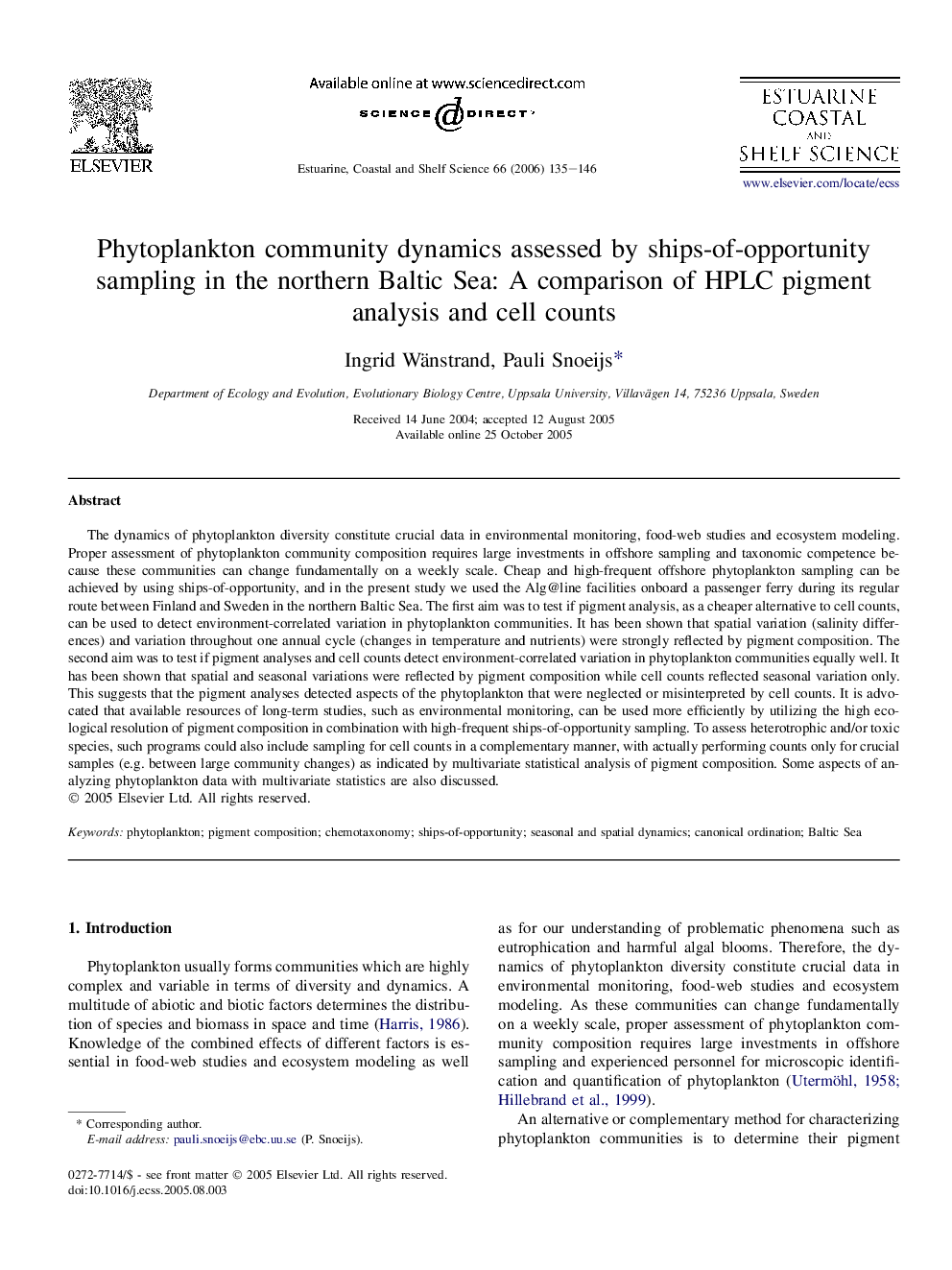| Article ID | Journal | Published Year | Pages | File Type |
|---|---|---|---|---|
| 4542567 | Estuarine, Coastal and Shelf Science | 2006 | 12 Pages |
The dynamics of phytoplankton diversity constitute crucial data in environmental monitoring, food-web studies and ecosystem modeling. Proper assessment of phytoplankton community composition requires large investments in offshore sampling and taxonomic competence because these communities can change fundamentally on a weekly scale. Cheap and high-frequent offshore phytoplankton sampling can be achieved by using ships-of-opportunity, and in the present study we used the Alg@line facilities onboard a passenger ferry during its regular route between Finland and Sweden in the northern Baltic Sea. The first aim was to test if pigment analysis, as a cheaper alternative to cell counts, can be used to detect environment-correlated variation in phytoplankton communities. It has been shown that spatial variation (salinity differences) and variation throughout one annual cycle (changes in temperature and nutrients) were strongly reflected by pigment composition. The second aim was to test if pigment analyses and cell counts detect environment-correlated variation in phytoplankton communities equally well. It has been shown that spatial and seasonal variations were reflected by pigment composition while cell counts reflected seasonal variation only. This suggests that the pigment analyses detected aspects of the phytoplankton that were neglected or misinterpreted by cell counts. It is advocated that available resources of long-term studies, such as environmental monitoring, can be used more efficiently by utilizing the high ecological resolution of pigment composition in combination with high-frequent ships-of-opportunity sampling. To assess heterotrophic and/or toxic species, such programs could also include sampling for cell counts in a complementary manner, with actually performing counts only for crucial samples (e.g. between large community changes) as indicated by multivariate statistical analysis of pigment composition. Some aspects of analyzing phytoplankton data with multivariate statistics are also discussed.
